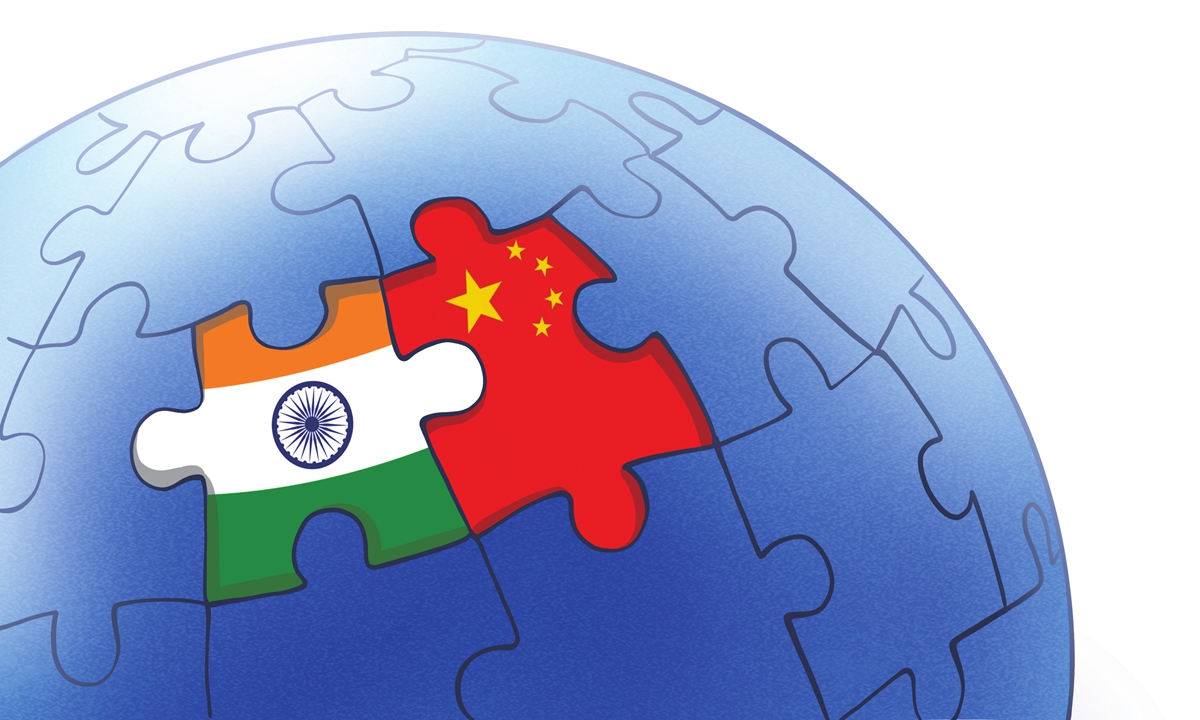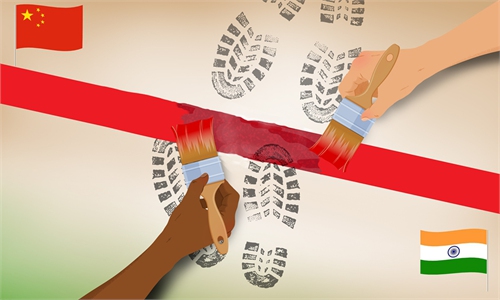What we can learn from Galwan Valley conflict

Illustration: Liu Rui/GT
Tuesday is the 1st anniversary of the deadly Galwan Valley skirmish. One year after, the trajectory of China-India bilateral relations remains uncertain. The bonhomie built up through informal summits between top leaders of the two countries were supposed to help resolve the long-standing border dispute.
Instead, this was the period of rapid increases in the frequency (and intensity) of their border face-offs. These were repeatedly resolved using well-established dialogue mechanisms. These face-offs were usually explained in terms of better infrastructure facilitating greater mobility from both sides. This superficial view missed the deeper undercurrents that were heralding how those dialogue mechanisms had long outlived their efficacy. Both sides needed to explore their new equilibria to even to sustain their minimalist aim of ensuring peace and tranquility.
For one, both China and India are no longer nations of 1990s. Both, especially China, have since become a major player in regional and global affairs. Their increasing interface in regional and global forums has transformed their equations, introducing newer challenges. Their equations were to become further tricky by the very center of global geopolitics shifting from the North Atlantic to Indo-Pacific, their ever growing asymmetry and India drifting closer to the US and its allies.
On the ground, at the Line of Actual Control (LAC), increasingly frequent encounters were beginning to result in soldiers' psychological fatigue. Invariably, forces had used restraint limiting face offs to pushing and shoving or stone pelting. But May 2020 saw an unprecedented case of simultaneous face-offs at the LAC.
Both sides have since stood by their respective versions of what let the guard down from which side. The sad reality is that even after a year, tension still remains between the two sides. Disengagement will then be followed by demobilization from advance deployments to return to peace and tranquility. Demarcation, and delimitation of the border remains a faraway objective.
Also, like the expression Hindi-Chini Bhai Bhai (Chinese and Indian are brothers) spirit of 1950s, their newfound bonhomie of 2016-2019 has proved equally fragile in either appreciating or redressing expanding asymmetrically-driven fault lines. This explains why quick fixes to extant mechanisms have not delivered this time.
If history has any lesson to these ancient civilizations, it's a combination of historical events, structural shifts, and bold initiatives that can help rectify a new stability in China-India ties.
The coming BRICS summit in September may be an opportunity for two leaders to take bold initiatives to address this complex border issue as also strengthen their non-Western groupings.
With all its anxieties, the world is in the grip of deadly pandemic. But it has also witnessed enormous capacities of China and India to assist much of the world without undercutting each other's outreach. It has brought forth the role of China's active pharmaceutical ingredients that contribute to the making of India as the "pharmacy of the world." Meanwhile, China has also been training thousands of Indian medical students. Indeed, just like their bilateral trade in the 1990s, their healthcare connect in the post-pandemic world can help build new bridges. Just like their trade that has continued to thrive even during recent tensions their healthcare connect can become another strong pillar of their post-pandemic partnership.
With healthcare emerging as the focal point for many years to come, and as home for 36 percent of humanity of this planet, China and India working together remains a prerequisite for building a shared future of humankind.
The author is professor and chairman at Centre for International Politics, Organisation and Disarmament, Jawaharlal Nehru University, New Delhi. opinion@globaltimes.com.cn

